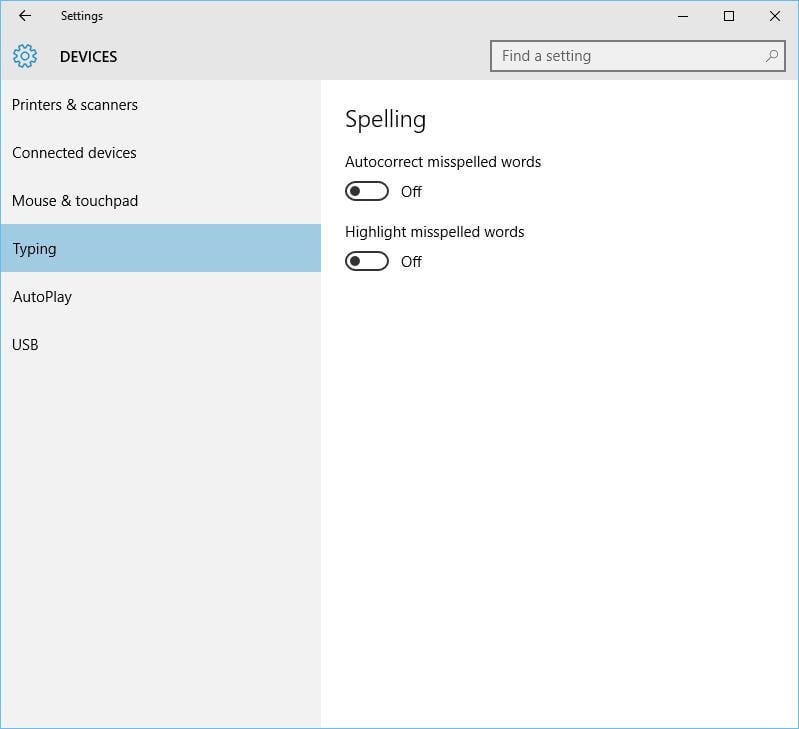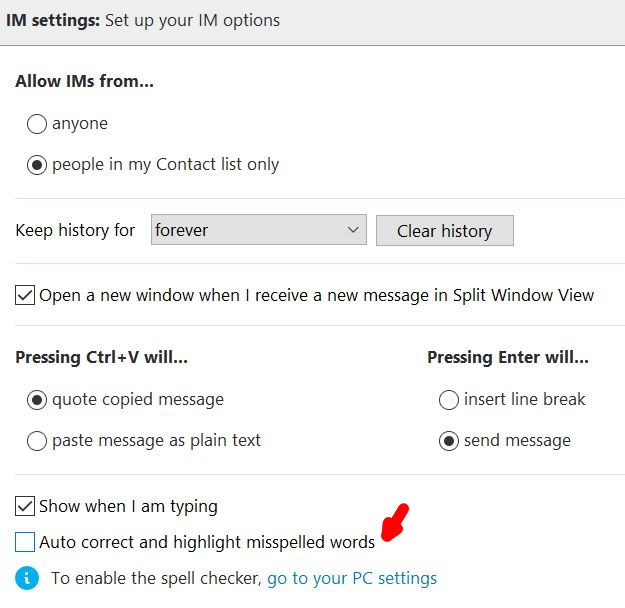

- #LYNC FOR MAC TURN OFF AUTOCORRECT MAC OS#
- #LYNC FOR MAC TURN OFF AUTOCORRECT CODE#
- #LYNC FOR MAC TURN OFF AUTOCORRECT FREE#
#LYNC FOR MAC TURN OFF AUTOCORRECT CODE#
I use Evernote to record code and command-line arguments all the time, and I only recently started seeing the smart dash corrections. However, this autocorrect issue has only recently become a problem in Evernote on OSX.
#LYNC FOR MAC TURN OFF AUTOCORRECT MAC OS#
To correct capitalization errors (such as. Thanks for the pointer to the global Mac OS settings. (You can also choose Edit > Spelling > Autocorrect to turn this feature on or off quickly.) From the Language menu, choose which language the autocorrections are applied to. Notice that if you do want to enable it, there are some great ones to add, like “adn” for “and” and “teh” for “the”. Choose Edit > Preferences > Autocorrect (Windows) or InDesign > Preferences > Autocorrect (Mac OS).
#LYNC FOR MAC TURN OFF AUTOCORRECT FREE#
They don’t call it “autocorrect” here, but Apple’s got ya covered: Just uncheck “Correct spelling automatically” and you should be good to go, free to make all the typos you’d like! To proceed with disabling autocorrect on my MacBook, click on the “Text” tab near the top. Instead of auto-correcting your words, your phone will flag words as possible misspellings. Try typing some text in a new message window.

Type ‘keyboard’ and open the first result that comes up (this should redirect you to Yosemite’s Keyboard settings located in the system preferences menu). I don’t have that checked because I already have too darn many things on my menu bar, but your experience may well be different! If you’re having autocorrect issues on your iPhone, you can turn the feature off with a few taps. To disable auto correct on your Mac running Yosemite, do the following: Launch Spotlight by clicking on the magnifying glass icon located on your desktop’s upper right-hand corner. Note also that if you use emoji while on your Mac you can get an emoji menu to show up on the menu bar just like you would on an iOS device by checking “Show Keyboard, Emoji, & Symbol Views in menu bar.”

There’s actually a lot here you can fine tune to improve your experience with Mac OS X, including keyboard brightness if you have an illuminating keyboard (mostly laptops) and the key repeat speed. Uncheck the box that is next to correct spelling automatically to disable the auto-correct on your system. On your Mac, start by going to System Preferences… from the Apple menu on the top left of your screen.Ĭlick on “Keyboard” to proceed, and you’ll see a surprising number of options and settings: Turning Off Auto-correct in the System: You can completely disable the option in the system by following these simple steps: Open the System Preferences and hit the keyboard option and after that click text tab. The problem is that real spelling correction needs to take context and grammar into account, understanding the difference between “two”, “to” and “too”, for example, and that’s a tough problem!įortunately, one suspects that engineers inside of Apple HQ have similar mixed experiences with autocorrect because they’ve made it quite easy to disable or turn off within the world of Mac OS X, whether you’re running Yosemite or another of the many releases of the popular operating system. Auto-correct is definitely a source of annoyance for a lot of people on both the Mac and Windows system of the aisle, seeming to turn a slightly misspelled word into something completely random and different as often as it fixes “nad” to “and” and “teh” to “the”.


 0 kommentar(er)
0 kommentar(er)
